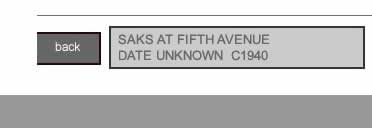 |
 |
 |
||||
 |
 |
 |
||||
Walter Dubois Richards (1907-2006) an artist associated with Cleveland and Chicago. In the 1930's he was active as a printmaker, and worked extensively for advertising and magazine covers. He transferred to New York in 1936.His Shrunken Head printed by Men Magazine (under the pseudinym Wally Richards) can be found celebrated on the WWW. With Hardie Gramatky and Stevan Dohanos he founded the Fairfield Watercolour Group in 1946.By the end of his very long life, he designed over thirty stamps for the US Postal Serrvice. New York Times ,Review By WILLIAM ZIMMER Published: October 03, 1999 - "WHETHER high art should mingle with low art, or high culture with mass culture, seems to be a burning question these days. So the current show at Connecticut Graphic Arts Center in Norwalk is something of a timeout. The division between these planes is almost erased when it comes to the seven-decades-long career of Walter DuBois Richards, who was a major illustrator during the golden age of advertising and mass circulation magazines, the 1930's through the 60's. Always alongside his commercial work was his fine art; he was a painter and printmaker as well. Mr. Richards, who is 92 and lives in New Canaan, was born on a farm in Ohio. His upbringing surely influenced his first linocuts and wood engravings in the early 1930's. From another vivid region he shows industrious people doing what most of us think of as picturesque labor: fishing and trapping lobsters in Maine. These early works are mostly marked by strong, dramatic contrasts of black and white. And in these early works he shows a special talent for chronicling the different ways water is displaced by sailing craft, as well as the nuances of Maine's shifting weather. These mundane occurrences continue to interest him, but he has always been congenial with mystery, even eeriness. The Maine linocuts include a ''Roadside Evangelist'' with no potential converts in sight, and in 1935 he did a series of wood engravings illustrating ''Ethan Frome.'' A lithograph from 1968 becomes a dip into Surrealism: ''The Same Tree Twice'' is worthy of Bunuel. And it was in Eastport, Me. that Mr. Richards studied with the especially deft lithographer, Stow Wengenroth. Mr. Richards's lithographs are marked by a sometimes photographic clarity that is not usually associated with this medium. Patience and a light touch to which pressure can be added seem to be the key. If an industry wants anything from its advertisements, it wants its product to be seen as clearly and as detailed as possible, and Mr. Richards's mastery of lithography seems to have fed directly into his successful commercial career. The first, subtle appearance of an advertisement in the parade, which is not always chronological, is a lithograph from 1950 titled ''Cadillac.'' A black car has stopped before an ornate, columned building in Washington (the Capitol is visible at the far right). A man in a top hat is getting out; a similarly dressed man comes forward to meet him. This is a sales pitch, but also the makings of an intriguing story. " |